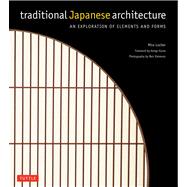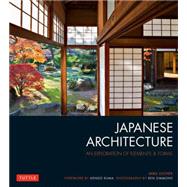Traditional Japanese Architecture

Traditional Japanese Architecture
- ISBN 13:
9784805309803
- ISBN 10:
4805309806
- Format: Hardcover
- Copyright: 11/10/2010
- Publisher: Tuttle Pub
- Newer Edition
Rent
Sorry, this item is currently unavailable on Knetbooks.com
Note: Supplemental materials are not guaranteed with Rental or Used book purchases.
Extend or Purchase Your Rental at Any Time
Need to keep your rental past your due date? At any time before your due date you can extend or purchase your rental through your account.
Summary
Traditional wisdom and customs continue to play an important role in contemporary life in Japan, and historic buildings, some hundreds of years old, exist in most towns and cities. Traditional architectural forms and construction methods still are in use for particular building types. Yet what we today understand as "traditional" was understood as such only from the time the country reopened its doors to the outside world. It was first the eyes of outsiders and then the eyes of Japanese trained in the ways of the West, which led to the understanding of the present concept of "tradition." In the same way, what we now think of as "traditional Japanese" was not always purely Japanese, as the Japanese culture we know today has been informed and transformed over centuries of contact with China and other countries. Everything traditional goes back to nature and the ways of life that developed in concert with the seasonal climate and mountainous landscape. This sensibility, which imbues everything that we now call "traditional Japanese," has drawn many an observer into the forest that is Japan. The arts, architecture, and landscapes of traditional Japan intrigue and influence not only contemporary designers in Japan but all over the world. There is much we can learn, starting with the connection to the natural and cultural environments and how those relationships have transformed over time. There is a history of identifying traditional Japanese architecture by classifying specific elements within historic buildings. This book builds on that history. It is not meant to be an exhaustive compilation, and there are, no doubt, many details neglected









